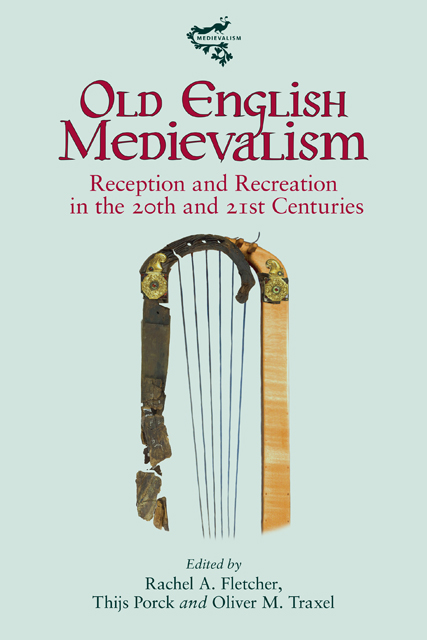Book contents
- Frontmatter
- Contents
- List of Illustrations
- List of Contributors
- Acknowledgements
- List of Abbreviations
- Early Medieval English in the Modern Age: An Introduction to Old English Medievalism
- I Reinventing, Reimagining and Recontextualizing Old English Poetry
- II Invoking Early Medieval England and Its Language in Historical Fiction
- III Translating and Composing in Neo-Old English
- IV Approaching Old English and Neo-Old English in the Classroom
- Bibliography
- Index
- Medievalism
9 - Ge wordful, ge wordig: Translating Modern Texts into Old English
Published online by Cambridge University Press: 17 December 2022
- Frontmatter
- Contents
- List of Illustrations
- List of Contributors
- Acknowledgements
- List of Abbreviations
- Early Medieval English in the Modern Age: An Introduction to Old English Medievalism
- I Reinventing, Reimagining and Recontextualizing Old English Poetry
- II Invoking Early Medieval England and Its Language in Historical Fiction
- III Translating and Composing in Neo-Old English
- IV Approaching Old English and Neo-Old English in the Classroom
- Bibliography
- Index
- Medievalism
Summary
Forecwide – Prefatory Matter
Translations into what is now called Old English are by no means a novelty of the twenty-first century or a pastime activity practised by ambitious literary scholars and linguistic historians, lofgeorn, ‘eager for praise’, in a field related to their profession. Translations of modern texts into Neo-Old English have also been undertaken on the basis of the pleasure principle, as both Peter S. Baker and Manfred Görlach have pointed out in their studies. The beginnings of translating foreign language texts into English are much earlier and closely linked to the early stages of literary culture in the English language – some 1300 years ago. To be sure, the list of translators whose names have come down to us is not a very long one, but it can boast of an outstanding and famous representative: King Alfred the Great. Alfred was king of the West Saxons from 871 to c. 886 and king of the Anglo-Saxons from c. 886 to 899. He and his circle of learned clerics and scholars initiated the so-called Alfredian Renaissance and actively contributed to it with a series of translations into English.
In the context of his ambitious project, the translation of Pope Gregory’s highly influential Latin handbook Cura Pastoralis, Alfred reflected on the difficult tasks resulting from such an undertaking. These tasks must have been especially complex and demanding since Alfred’s source text belongs to a long-standing and highly developed tradition of literary activities and culture, that is, Latin, while the target language, the West Saxon dialect of Old English, was still in the process of developing into a literary language.
Commenting on the difficulties connected to his project, Alfred provided a few hints relating to his methods in his preface to his translation of Pope Gregory’s Cura Pastoralis. These methods are quite simple, to be sure – but their simplicity allows for an easy and highly flexible application to the task: ‘[wende ic ða boc] on Englisc ðe is genemned on Læden “Pastoralis” ond on Englisc “Hierdeboc”, hwilum word be worde, hwilum andgit of andgiete’ [I translated into English the book called Pastoralis in Latin and ‘Shepherd’s Book’ in English, sometimes word by word, sometimes meaning for meaning].
- Type
- Chapter
- Information
- Old English MedievalismReception and Recreation in the 20th and 21st Centuries, pp. 173 - 190Publisher: Boydell & BrewerPrint publication year: 2022

